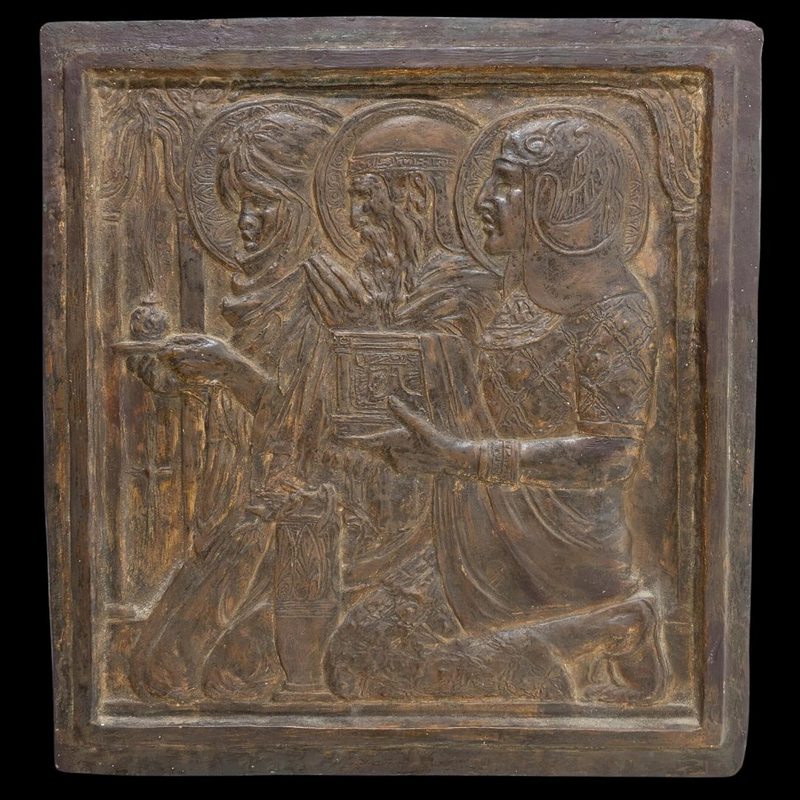Te Adoremus Domine (Three Kings)
Item
Artist
Meta Vaux Warrick Fuller
Title
Te Adoremus Domine (Three Kings)
Date
1921
Dimensions
12-1/2 x 11-3/8 inches
Description
"Te Adoremus Domine depicts the figures of the Three Kings—also known as the Magi—who followed a star from the East to Bethlehem in search of the newborn Christ, according to the Gospel of Matthew 2:1-12. Te Adoremus Domine is Latin for “Let us adore you, Lord.” Indeed, the kings kneel together in veneration and present their gifts of gold, frankincense, and myrrh. Their features and costumes are broadly African and Arabic, in keeping with the Gospel narrative and with Fuller’s progressive artistic vision.
Moreover, there is a regularity of visual rhythm in Fuller’s compact design: profiles, knees, and hands seem to operate in unison, suggesting an equality of the three figures, each of a distinct race, in their worship of the higher power of God. Fuller’s virtuosity in sculpting the human figure in relief is especially evident in the delicacy of the kings’ hands and the strength of their facial features. She successfully integrates her figures with elegant patterning and graceful linear decoration.
The image of the Black king has been the subject of an exhibition at the Getty (@gettymuseum) and is discussed in Harvard University’s The Image of the Black in Western Art, volume 2 (@harvardpress)."
Moreover, there is a regularity of visual rhythm in Fuller’s compact design: profiles, knees, and hands seem to operate in unison, suggesting an equality of the three figures, each of a distinct race, in their worship of the higher power of God. Fuller’s virtuosity in sculpting the human figure in relief is especially evident in the delicacy of the kings’ hands and the strength of their facial features. She successfully integrates her figures with elegant patterning and graceful linear decoration.
The image of the Black king has been the subject of an exhibition at the Getty (@gettymuseum) and is discussed in Harvard University’s The Image of the Black in Western Art, volume 2 (@harvardpress)."

